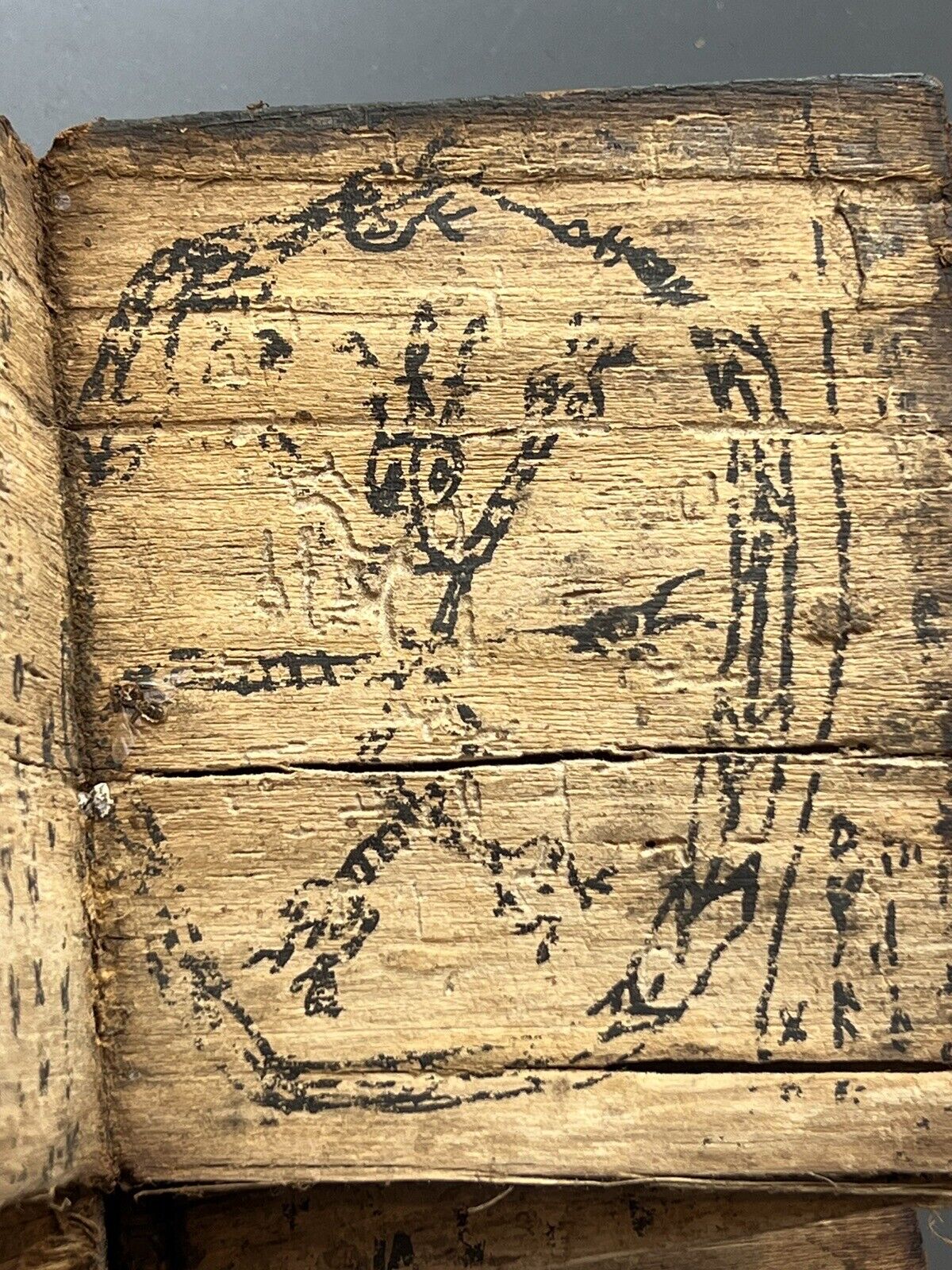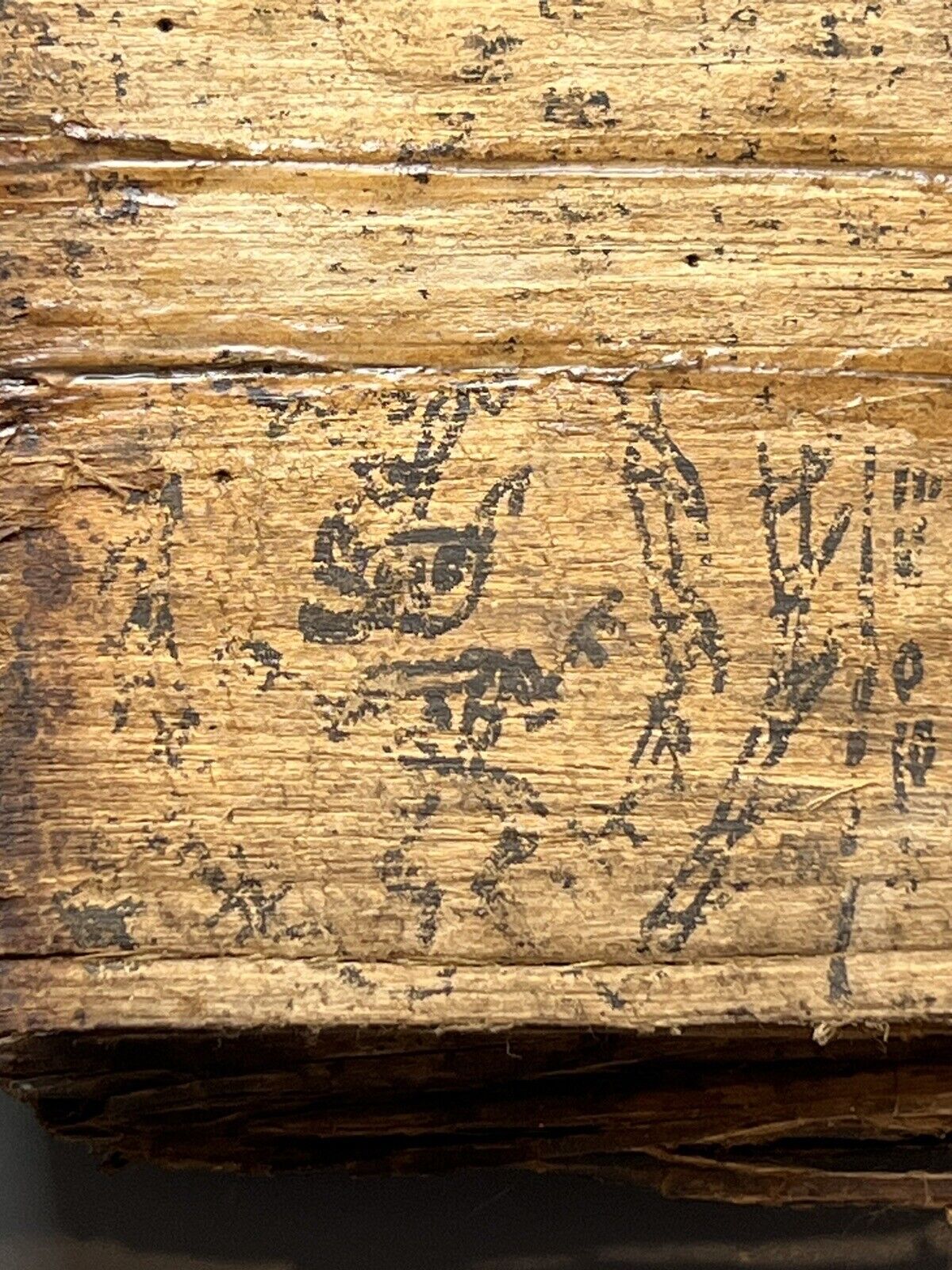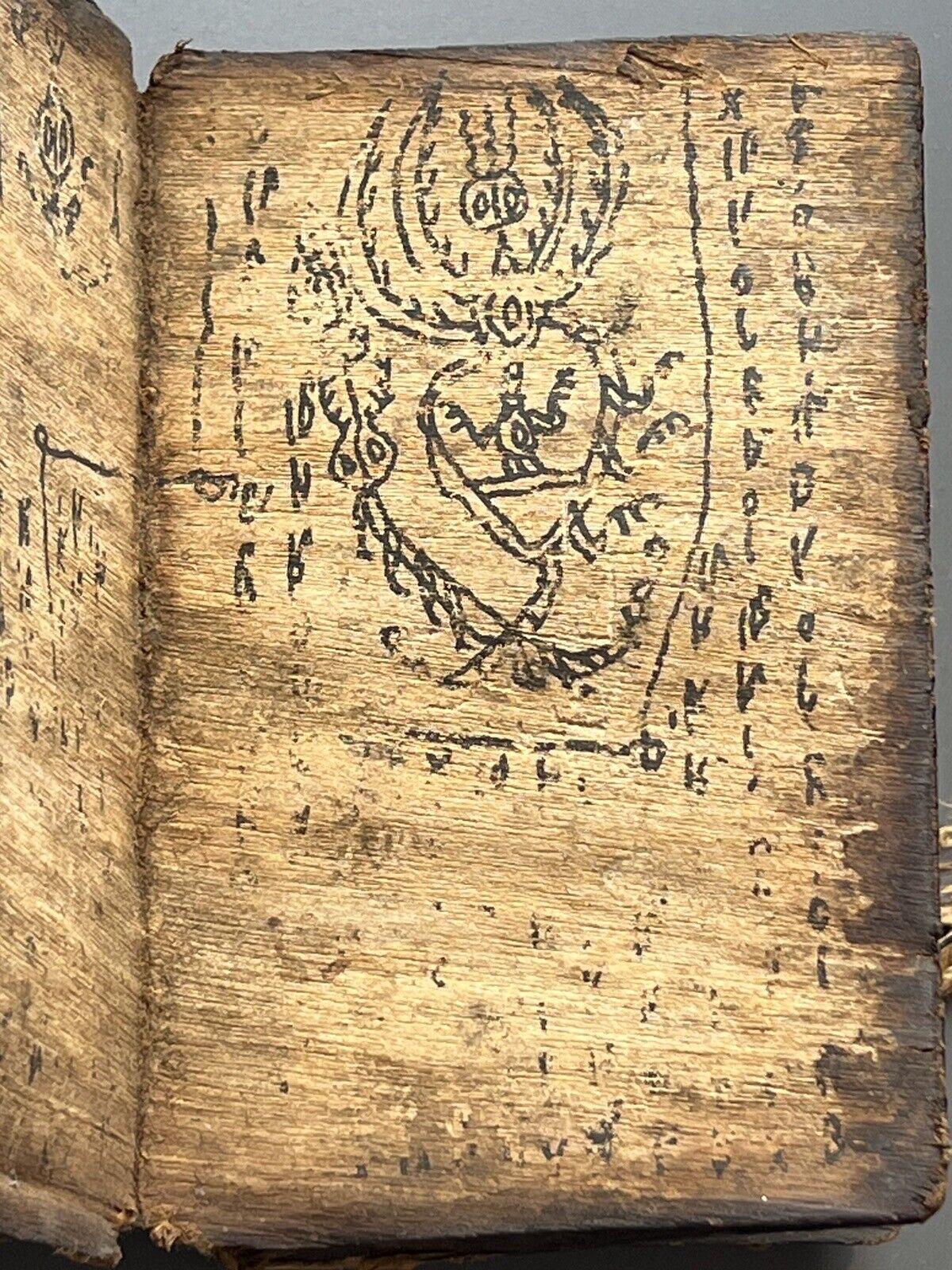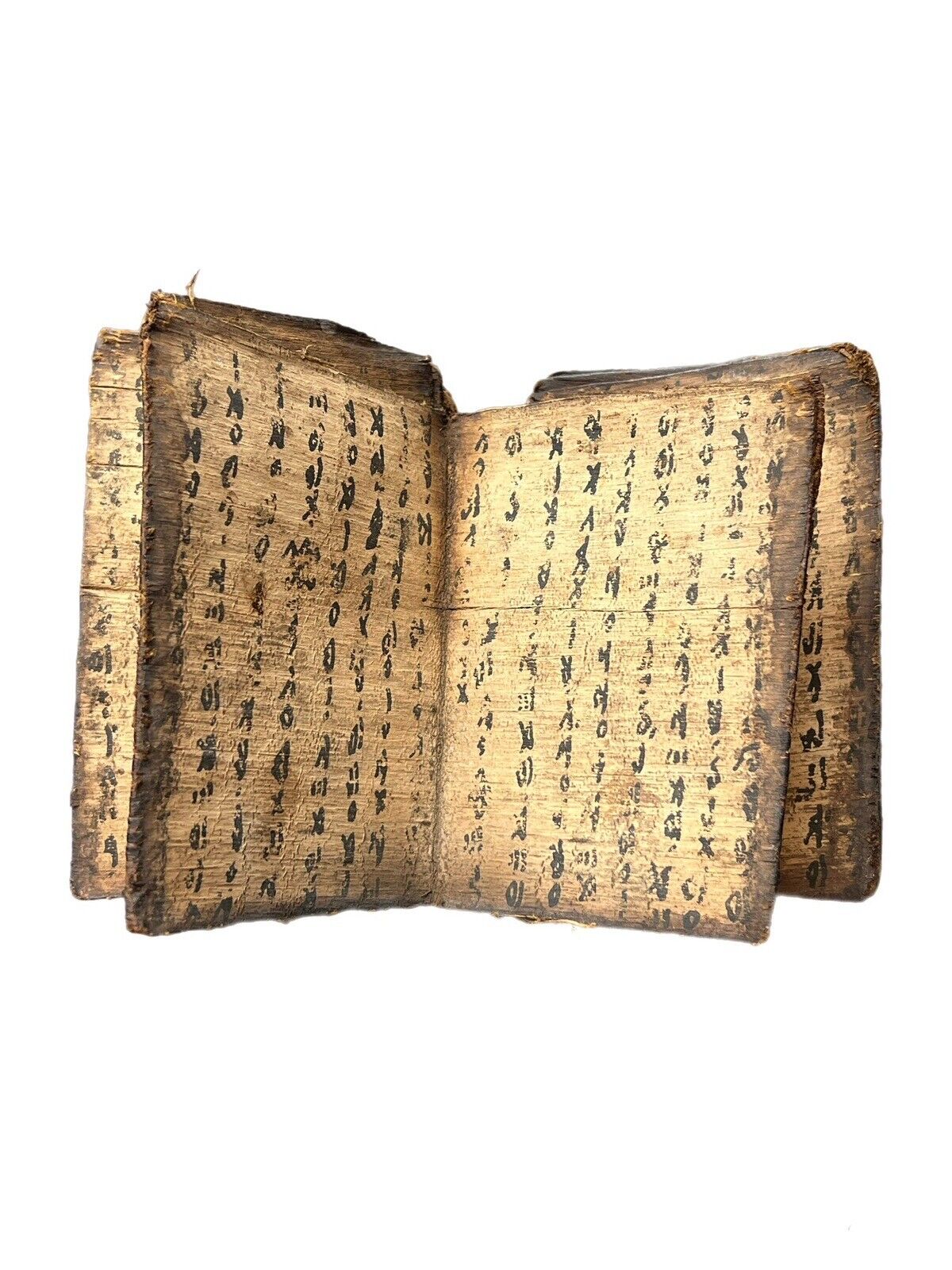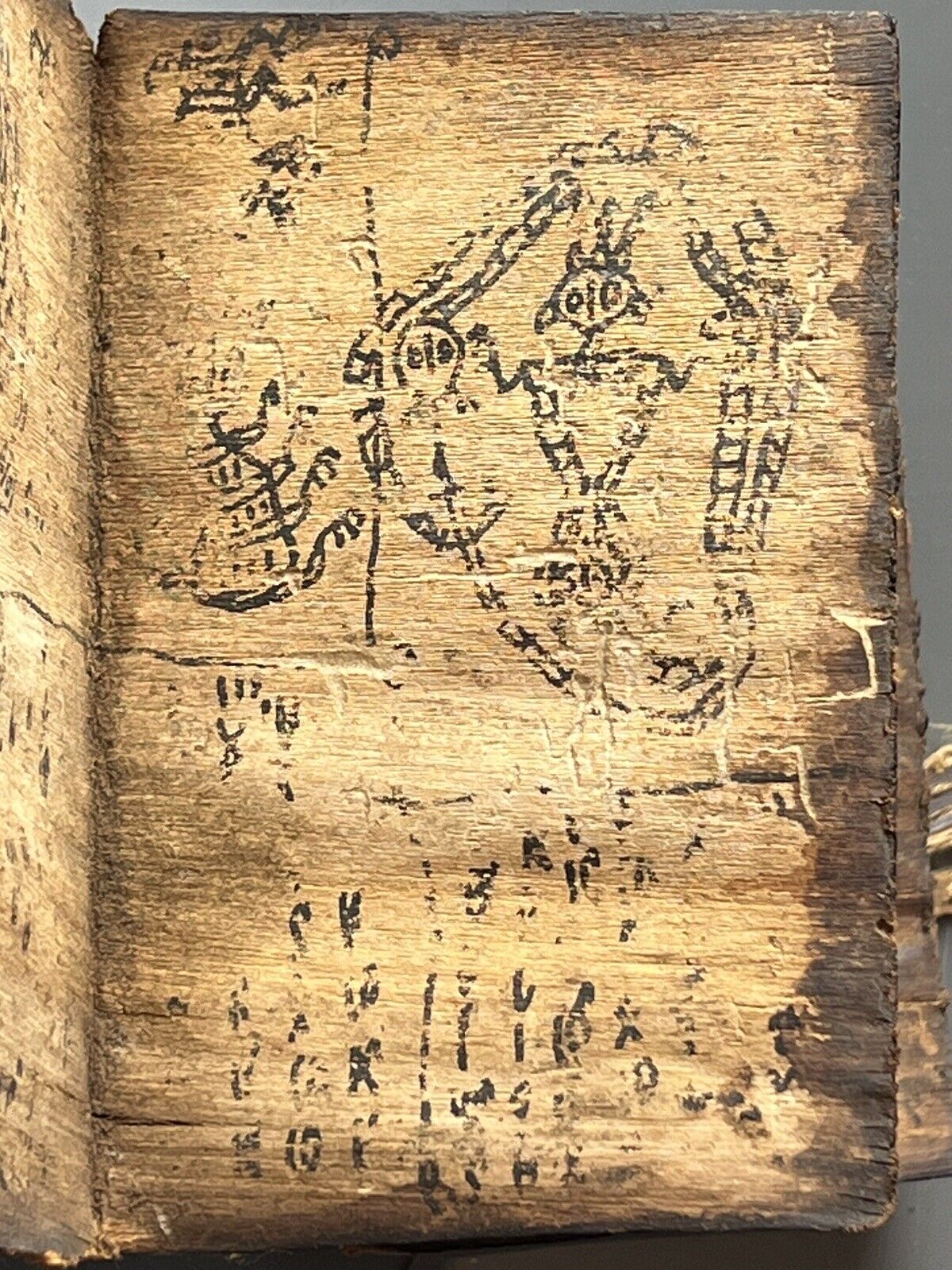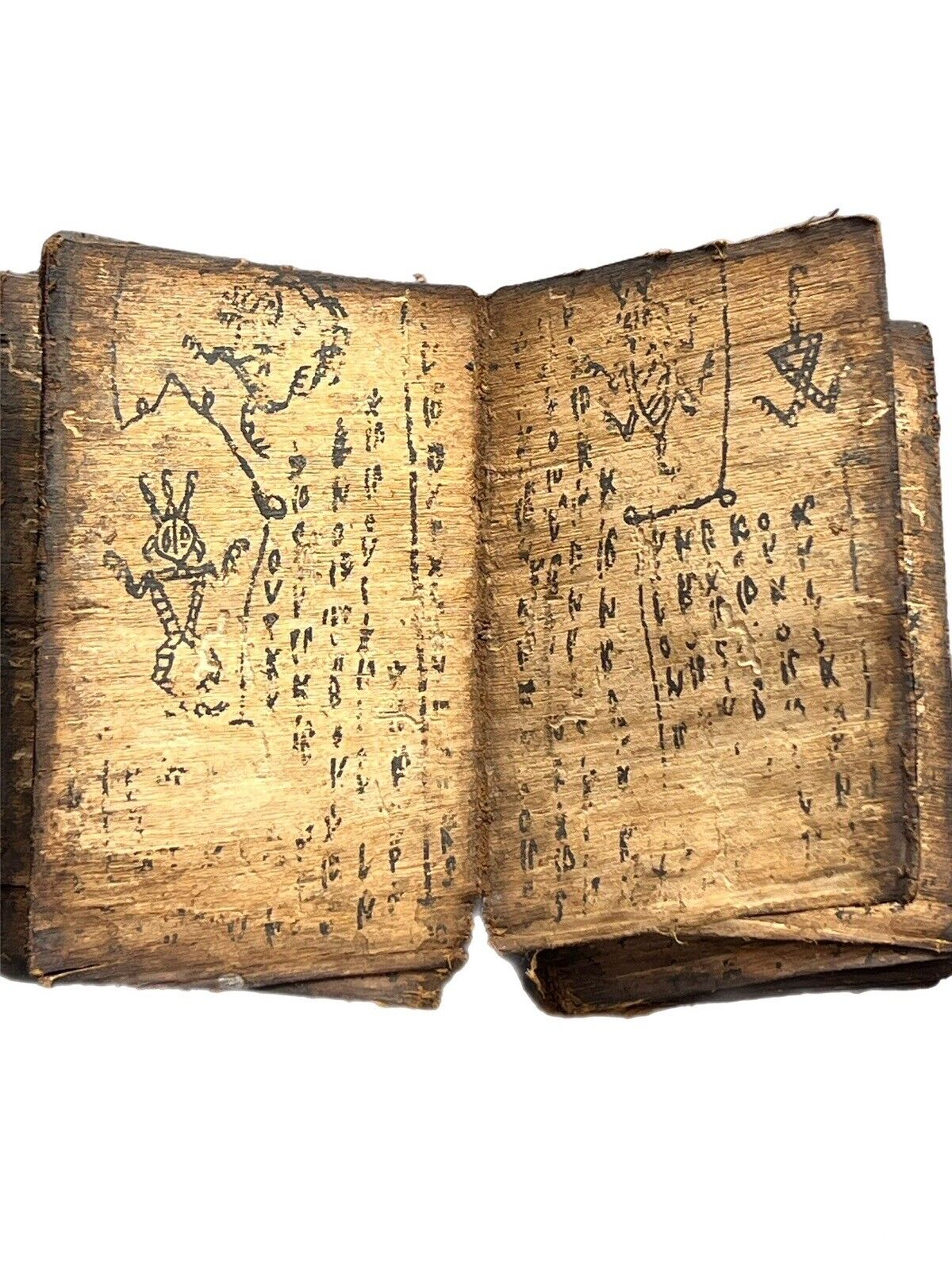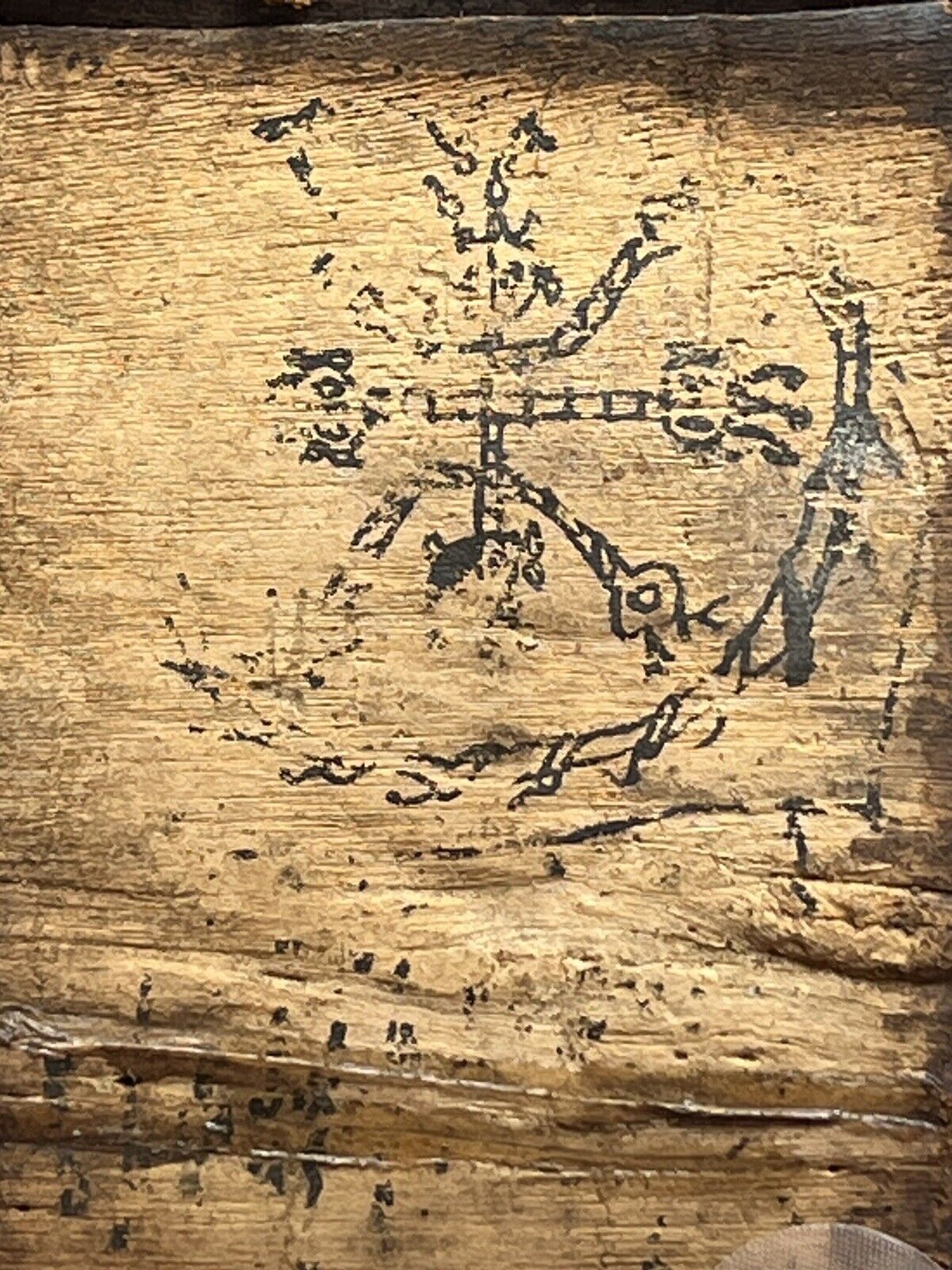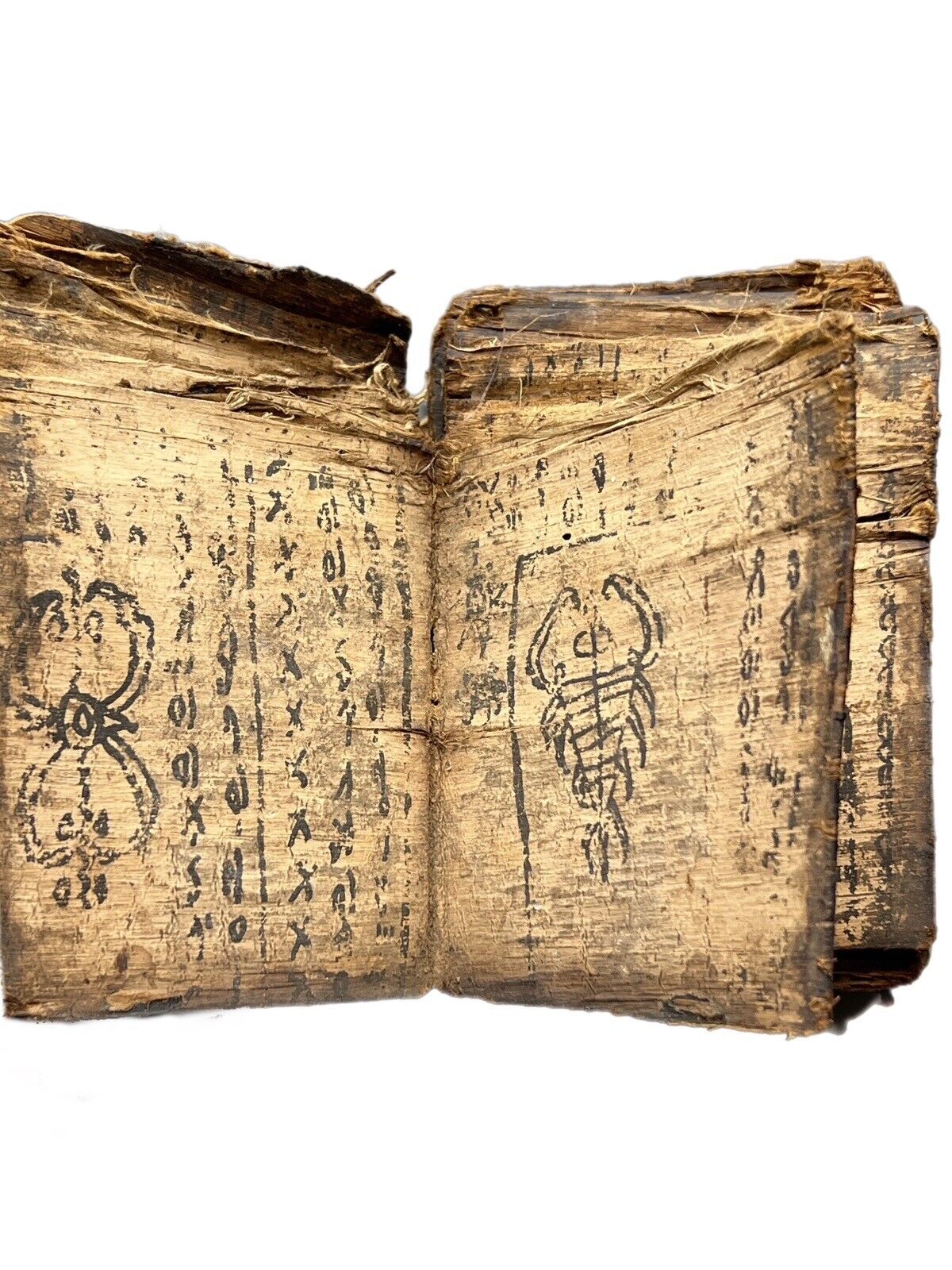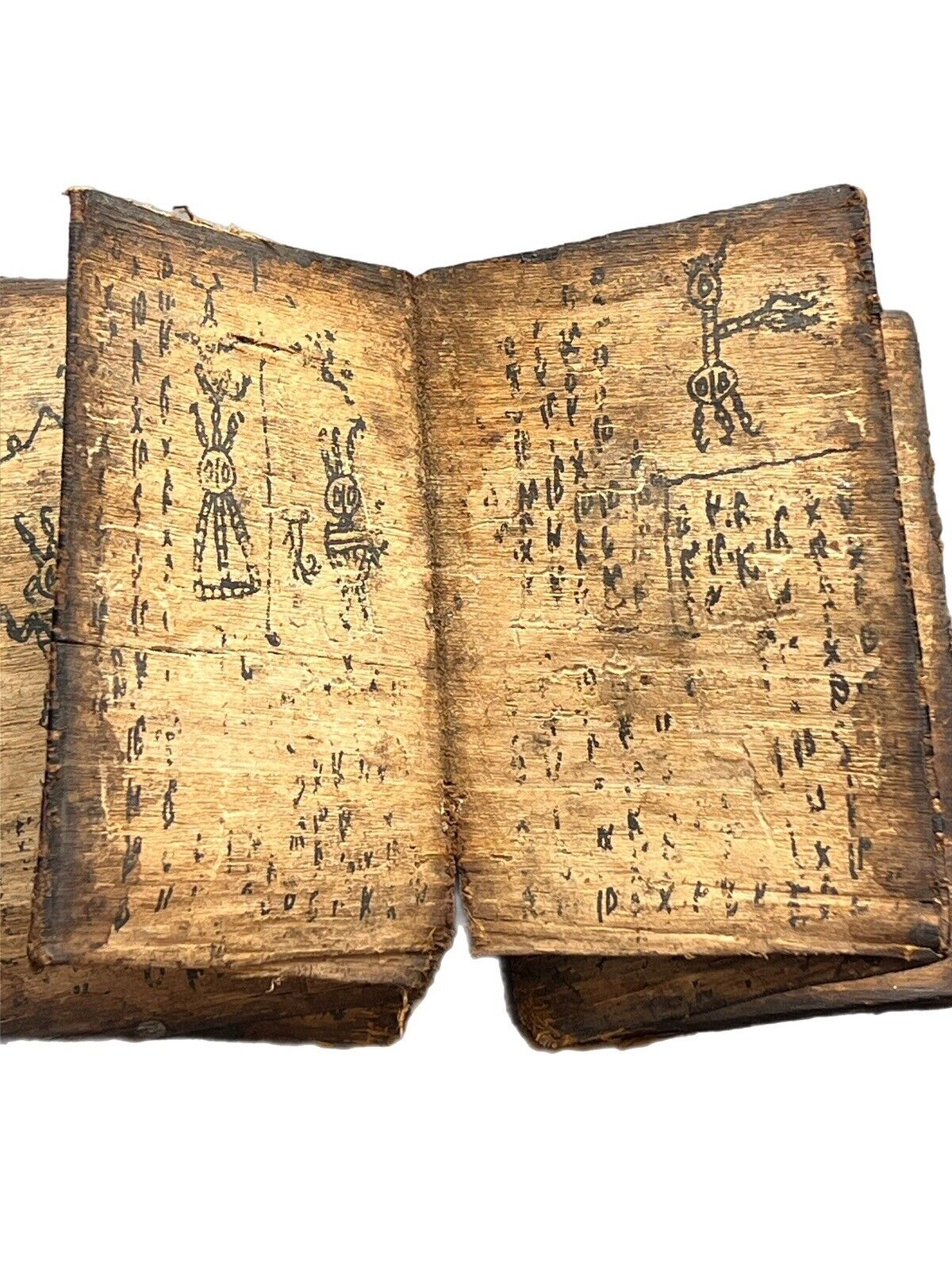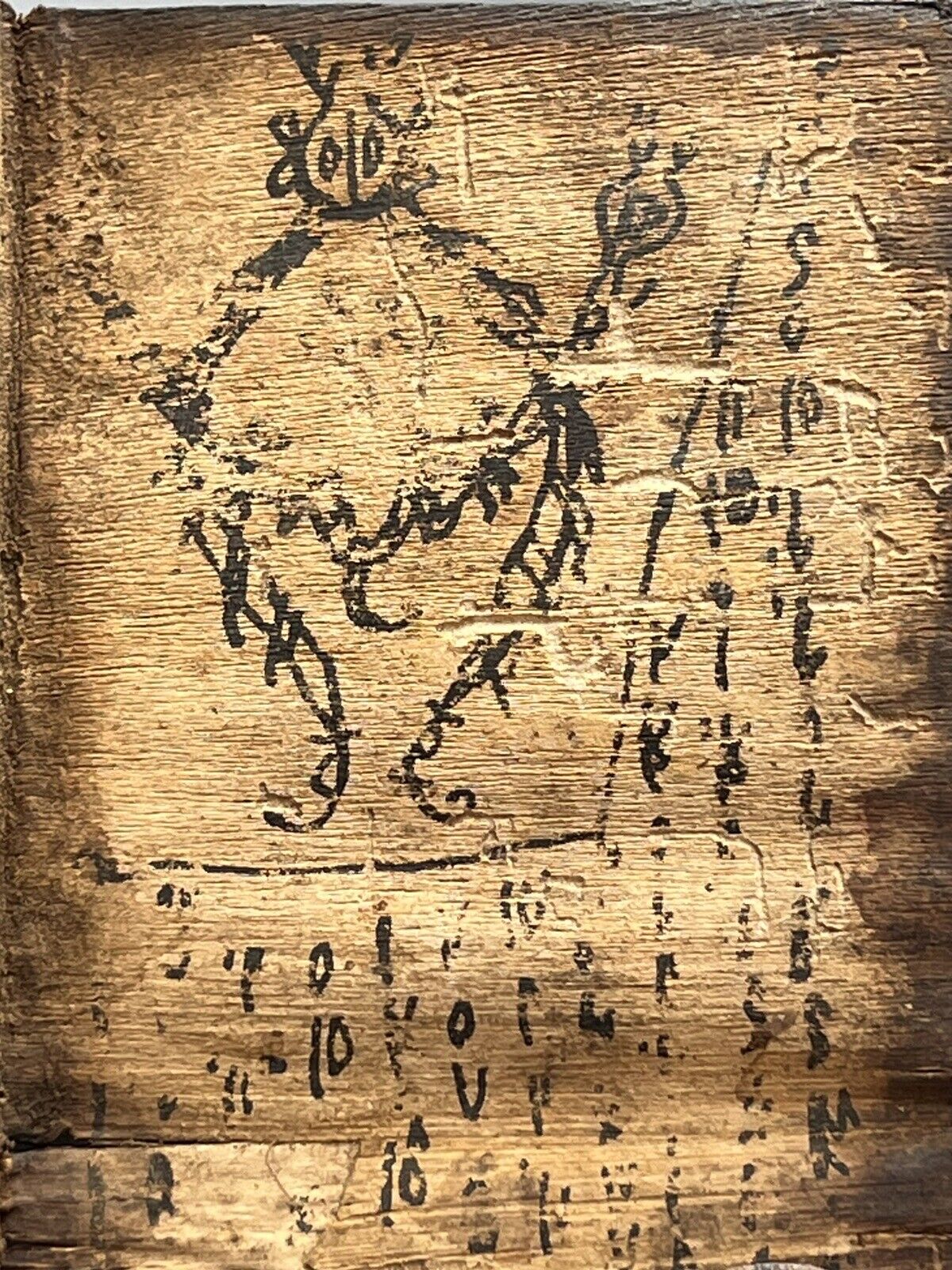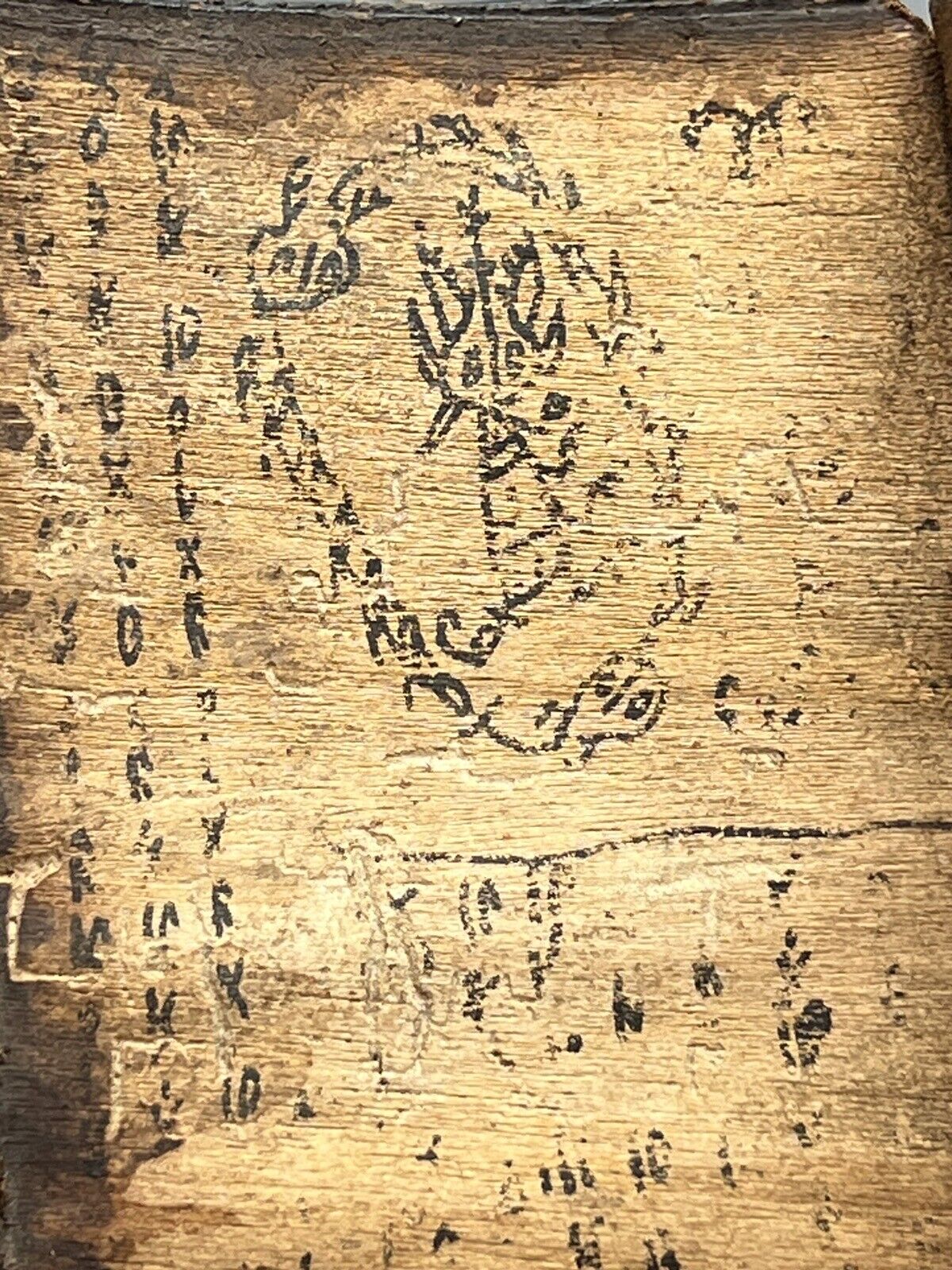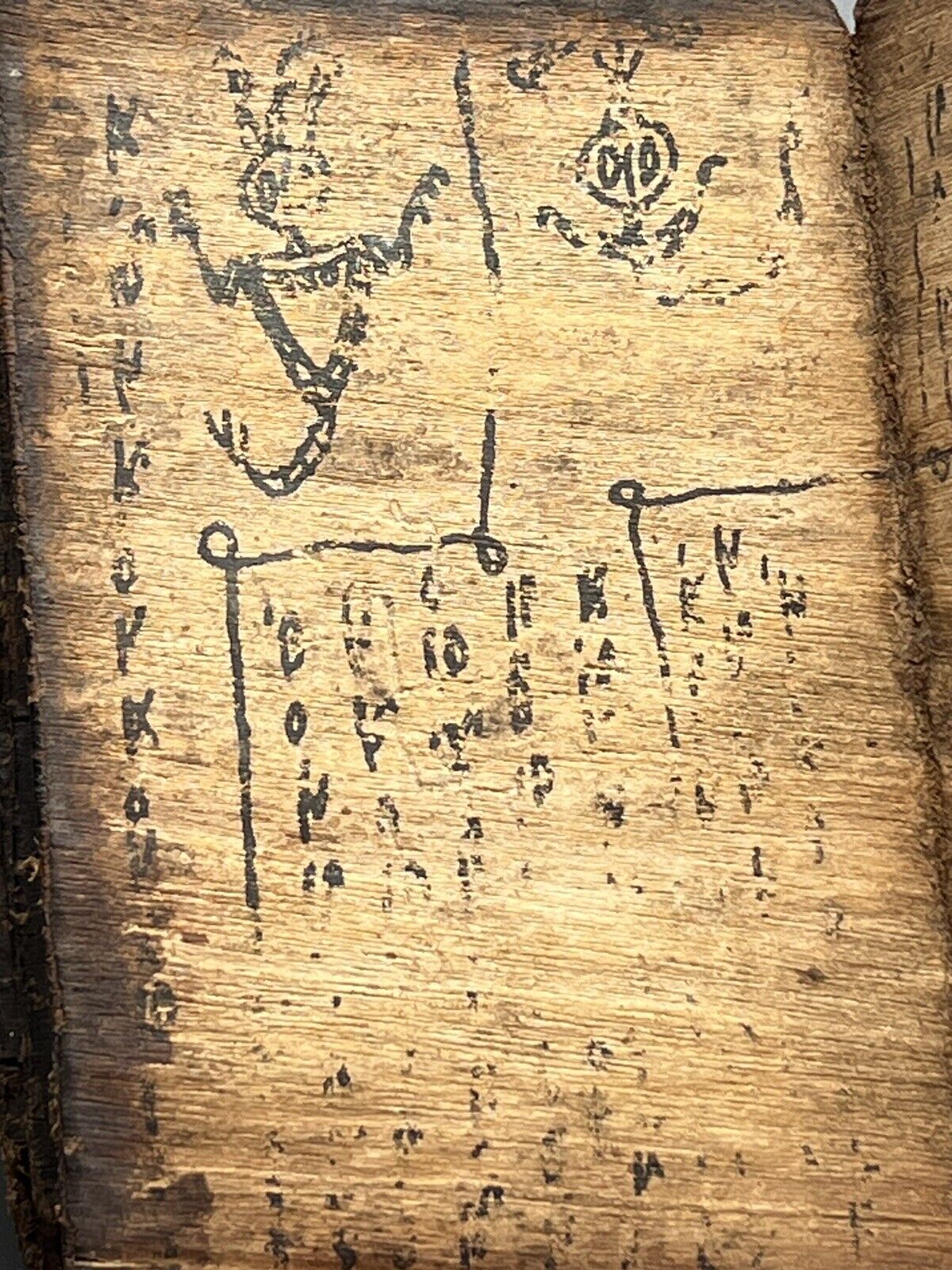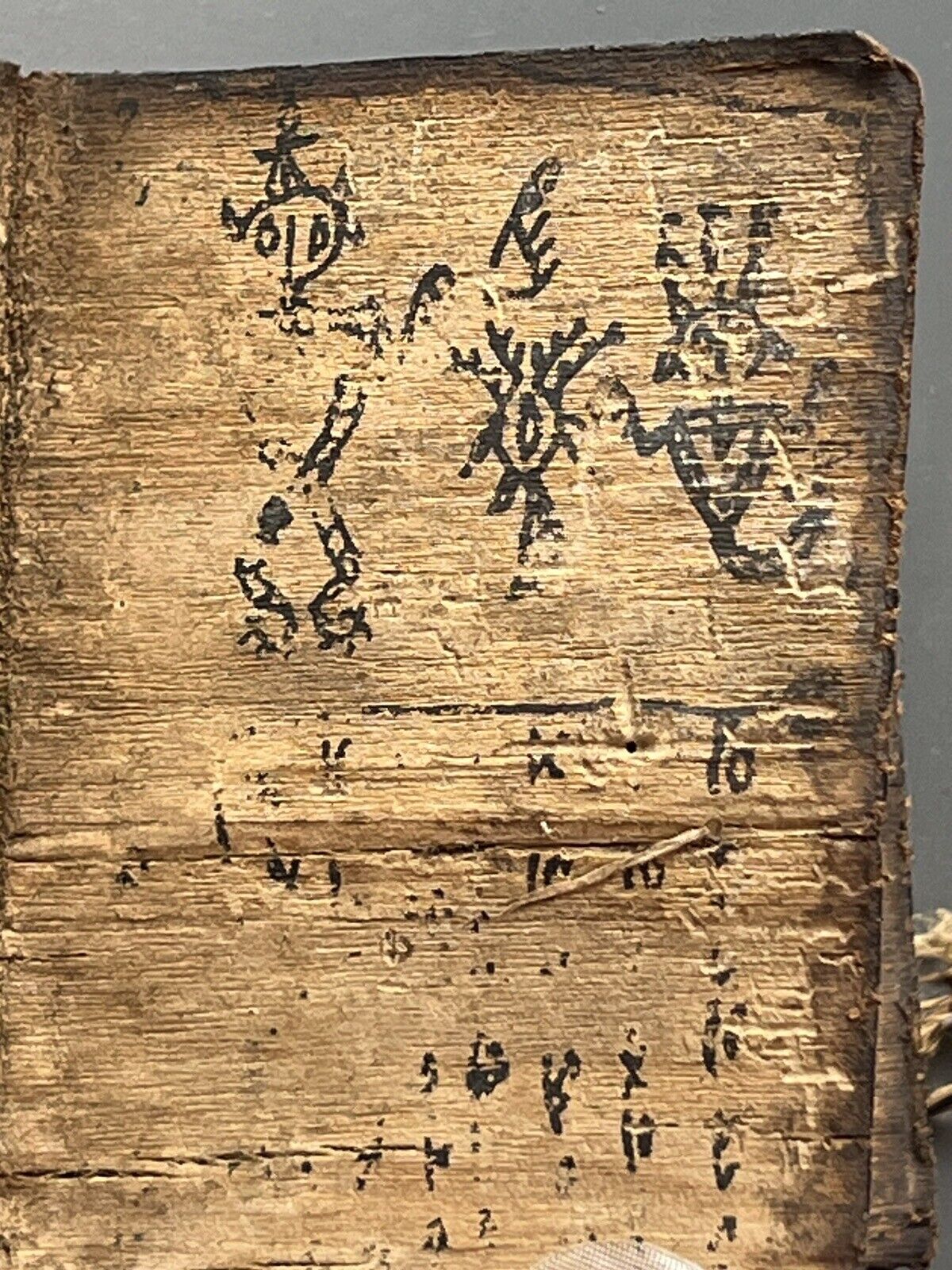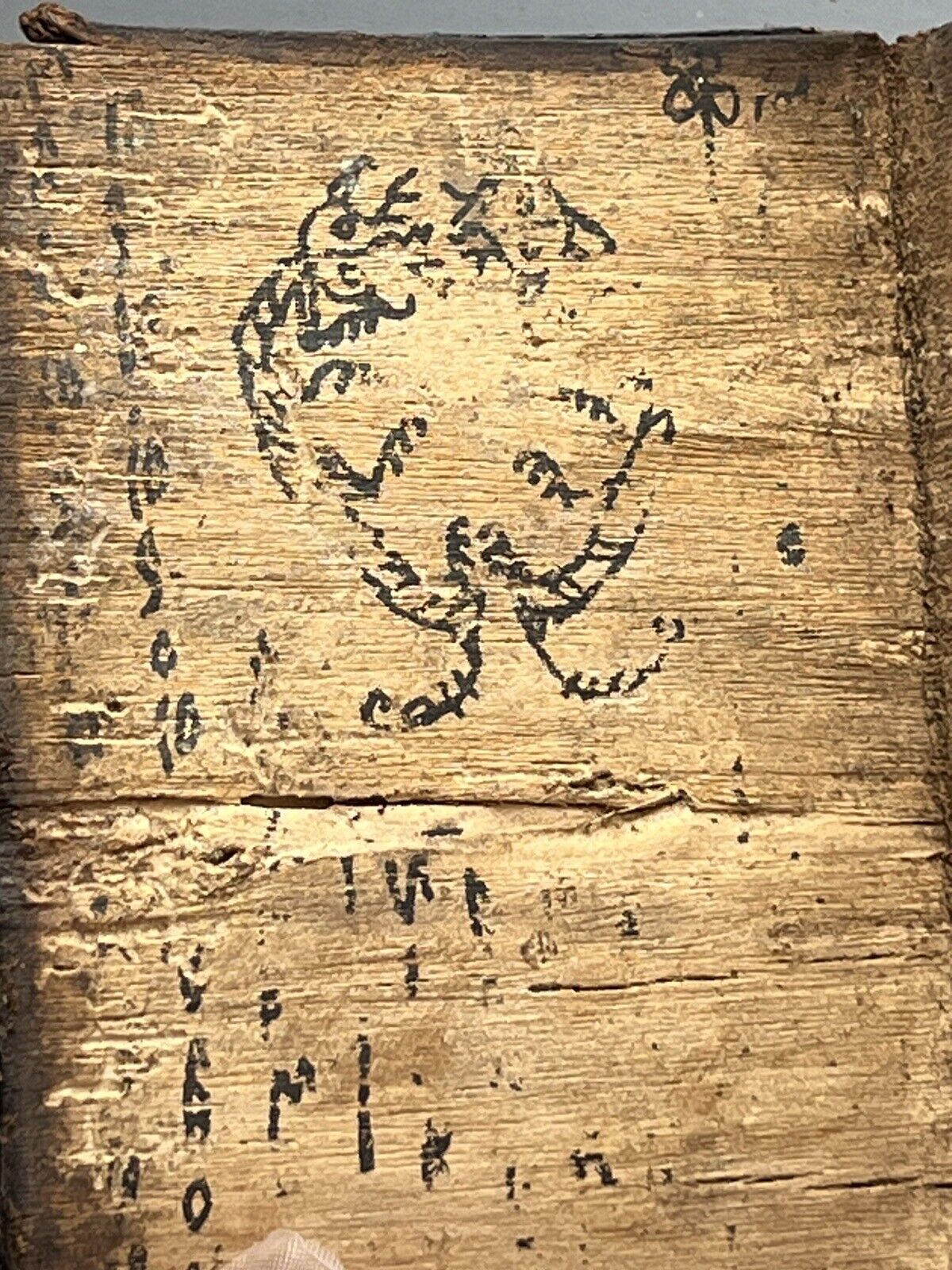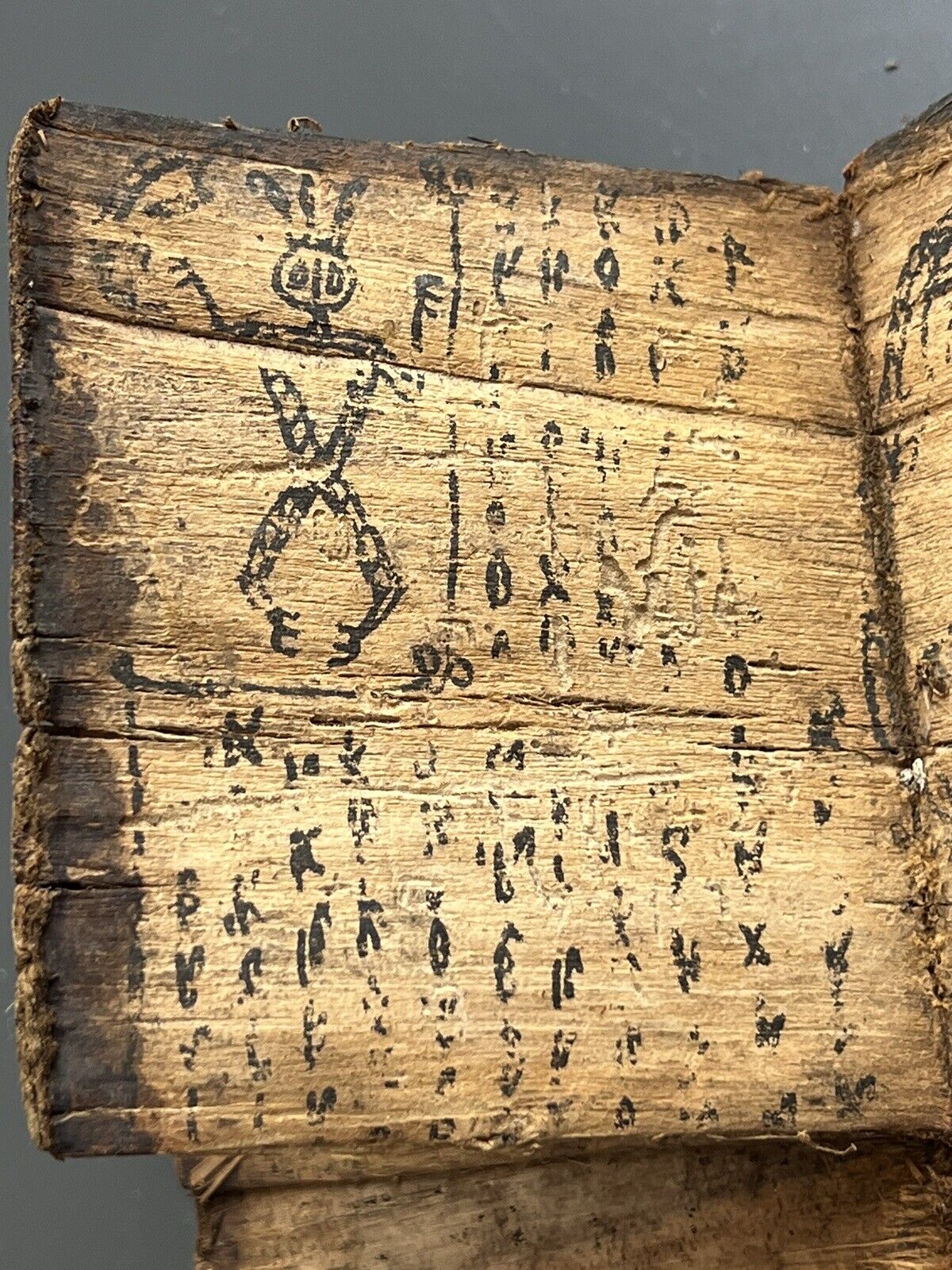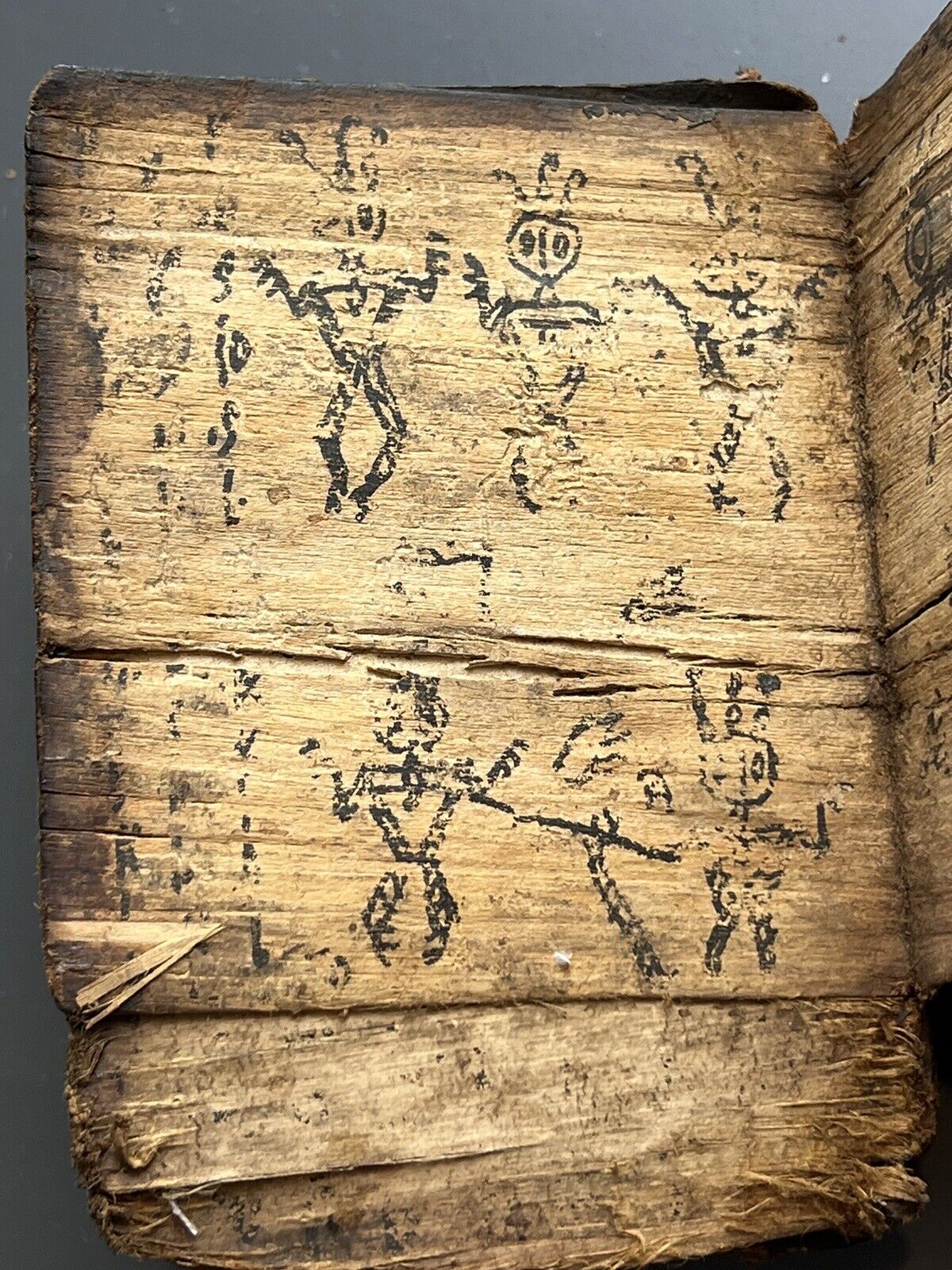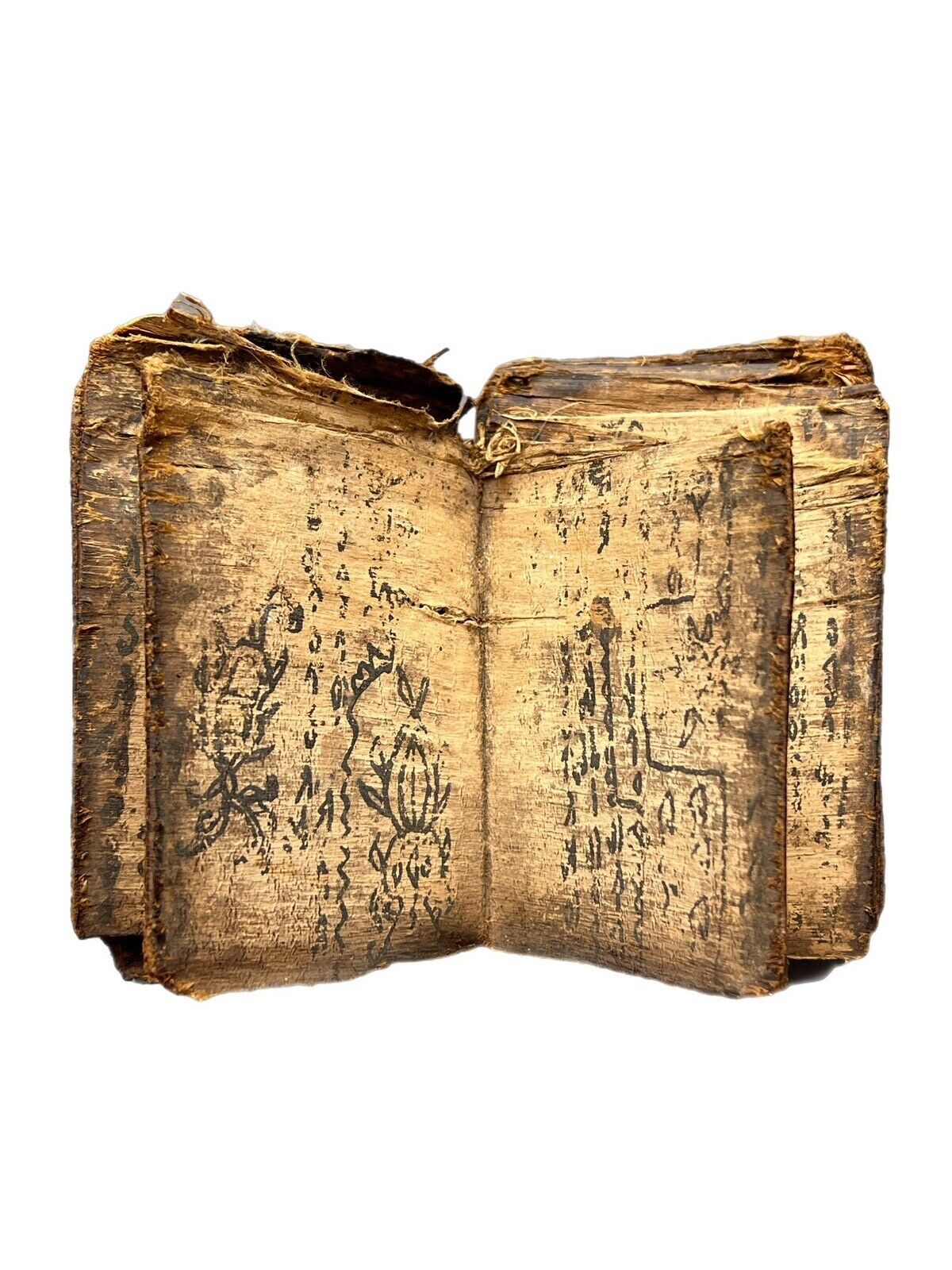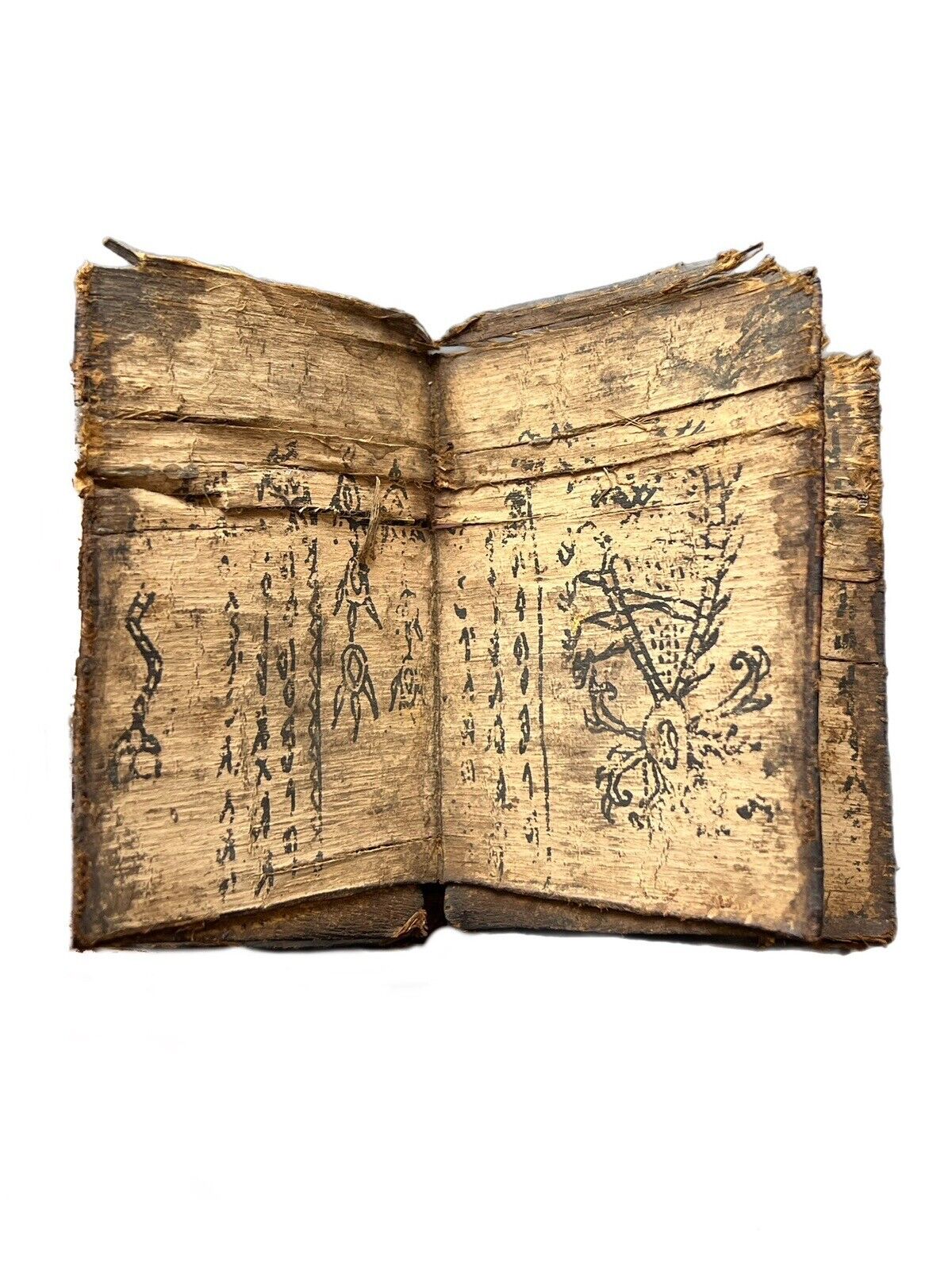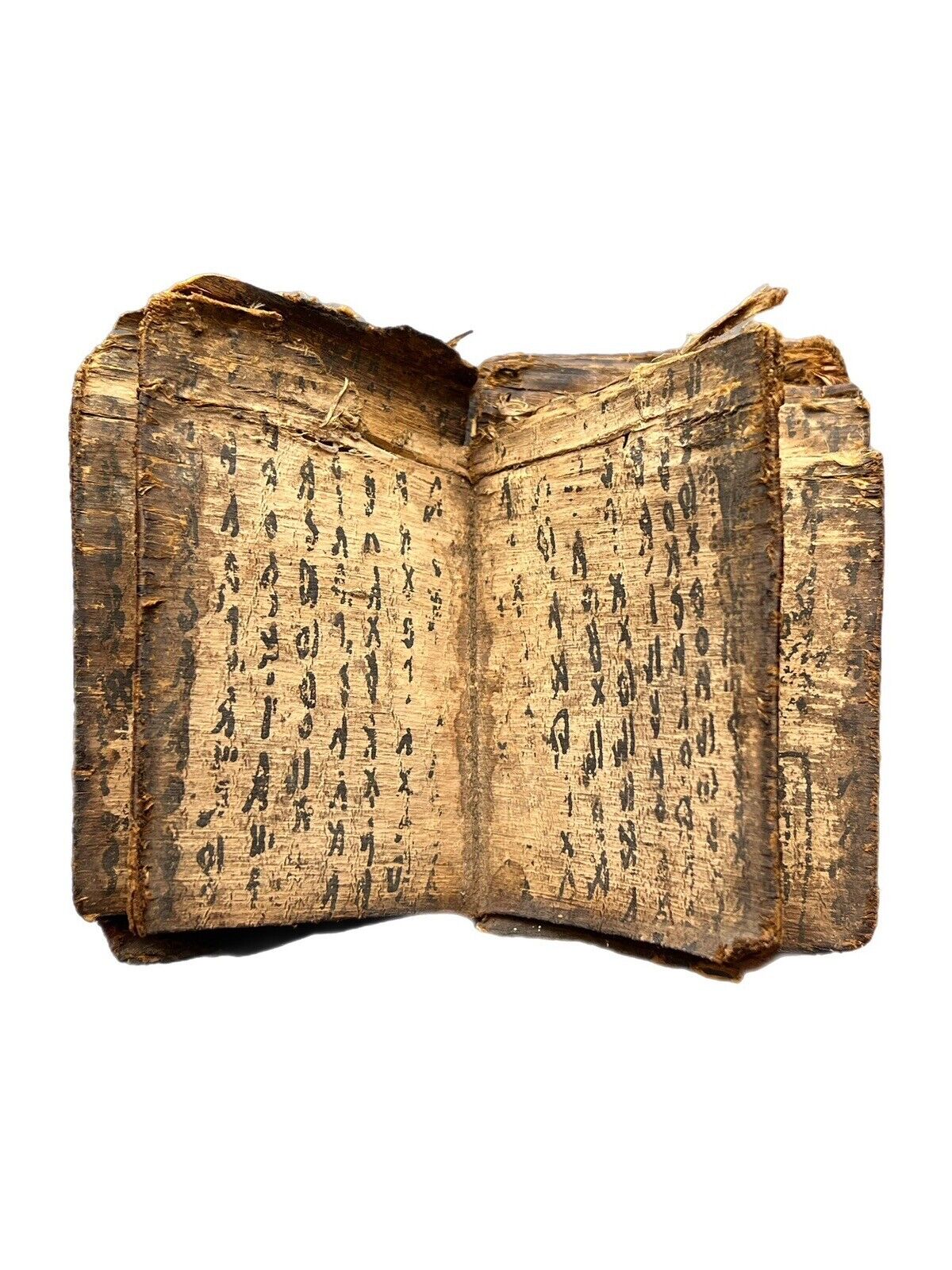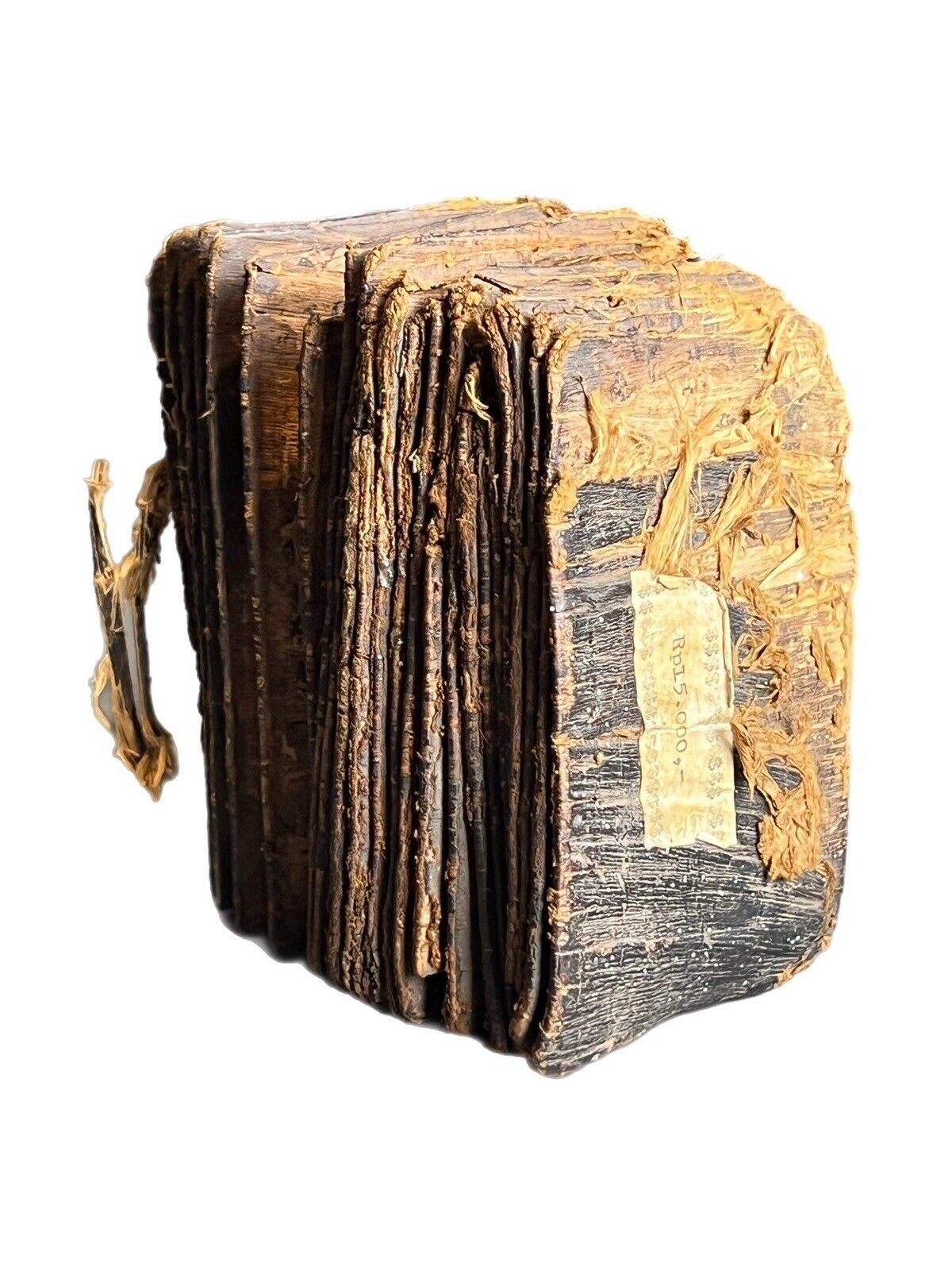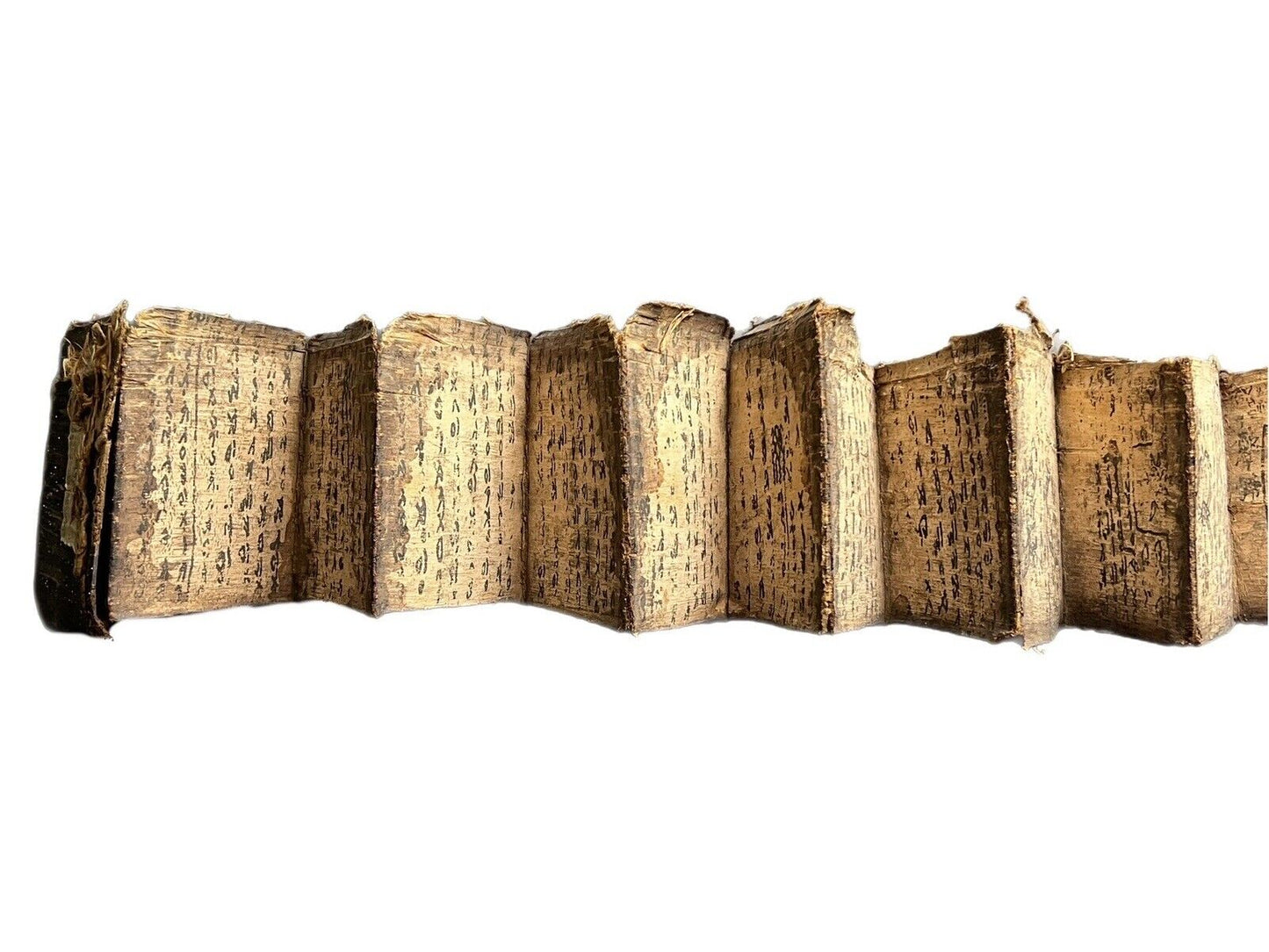1
/
of
21
Black Magic Grimoire Manuscript - Demonology, Occult, Cannibalism, Illustrated, Rare
Black Magic Grimoire Manuscript - Demonology, Occult, Cannibalism, Illustrated, Rare
Regular price
Sale price
£820.00 GBP
Unit price
/
per
Tax included.
Shipping calculated at checkout.
Couldn't load pickup availability
A very interesting and rare manuscript black magic grimoire, illustrated with various depictions of demons, evil entities, and probable depictions of torture and references to cannibalism, etc. Here with 24 leaves comprising 47 written 'pages' written on softened tree bark (perhaps bamboo).
-------------------
The Pustaha is the magic book of the Batak people of Northern Sumatra, Indonesia. They are very rarely encountered in commerce, especially illustrated, and are incredibly interesting for an insight into the occult practices of the Batak people. They were always written by a Batak magician-priest known as a Datu.
The Batak of Northern Sumatra were one of the few cannibalistic tribes to have a written script of their own. It is related to the Brahmi of India and ancient Javanese writing systems and is believed to be derived from Sanskrit. The script used to compose the Pustaha is known as poda which is a magical instructional language. The obscure nature of this script makes most Pustaha quite difficult to translate.
The magic knowledge contained within can be split into three categories: white magic, black magic, and divination, or, according to Winkler, protective magic, destructive magic, and divination. In this Pustaha/Grimoire we find it is mostly devoted to black magic, i.e. the magical spells/rituals required to inflict harm, damage, and kill. It is illustrated throughout with depictions of horned demons and what appears to be torture methods, as well as depictions of various animal-Gods, perhaps including Boraspati ni Tano, also known as Ilik, Pane na Bolon (ruler of the world of spirits), and perhaps some of the Gods which arose from the magical chicken God Manukmanuk Hulambujati. Little is known of these various Gods from Batak mythology and so it remains difficult to identify them. Some of the demonic entities depicted do present in the more typical Western depiction of extra-terrestrials which is an additional curiosity.
Of the black magic rituals which have been translated from extant Pustaha, one frequent example involves the kidnapping, rearing, and killing of a child by means of pouring boiling tin into the mouth; afterwards the body is chopped and mixed with other animals, left to putrefy and then the liquid oozing from the mixture is collected as an ingredient that would be used to invoke the spirit (begu) of the murdered child, which now acted as a Pangulubalang, a kind of spirit that can be controlled by the Datu (magician priest) to destroy enemies or other rivalling spirits. The Pangulubalang means 'fighting spirit' and refers to the soul of the victim of a human sacrifice which agreed to serve the Datu.
Another notable element usually found in the Pustaha is the black magic potion known as the pupuk. This is a powerful substance that can be used to reanimate the spirits of the dead and is the product of the aforementioned child sacrifice. The liquid which oozes from the putrefied mixture following the dismemberment of the child is collected and placed into a guri-guri (a type of cup). The leftover material is burned until it becomes ash. This ash is known as the pupuk. This magical substance is used to perform black magic, i.e. to inflict damage to enemies, as well as to give power to the protective statues which often surrounded villages.
The aforementioned does give interesting insight into the cultural practices of the Batak during this time period. Ritual cannibalism was well documented among pre-colonial Batak peoples, as well as through to the period when this was written, though was seemingly more rare after around 1816. Oscar von Kessel in 1844 was the first European to observe a Batak cannibalistic ritual for example, in which a convicted adulterer was eaten alive. Sir Thomas Raffles who studied the Batak in the 1820s wrote that "it is usual for the people to eat their parents when too old to work" and that "the flesh is eaten raw or grilled, with lime, salt and a little rice." This is also attested in Marco Polo's memoirs of his stay on the east coat of Sumatra in 1292 where the Batak would kill and eat prisoners who could not pay ransoms immediately. One imagines that such practices also served some black magical function given the magical practices of the Batak.
This Pustaha is almost certainly of the 19th century and thus one of the earlier examples of those extant. Our opinion is of being circa 1860, perhaps earlier, but this has not been independently verified. The earliest known dated example is from the 1760s and so this example could perhaps stretch as far back as the 18th century. We cannot translate this Pustaha and so cannot describe with certainty its content, however it certainly contains black magic as illustrated. The text likely describes various ritualistic practices, probably including cannibalistic ones (and recipes), as well as perhaps divination/astrology, laws, and magical formulae. It is a very rare grimoire for which few examples as profusely illustrated as this example survive which are not later reproductions of these earlier Pustaha.
-------------------
Condition:
Sections of bamboo written on in ink bound between two pieces of wood, each segment sewn together at the joints. Each segment is firmly attached. Loss to most of the rear cover and thus the writing on its verso. Some loss to ink throughout but the majority of the writing is clear and legible, as are most of the drawings. Price label stuck to front cover reading Rp15,000 (presumably Rupees), probably from the early 20th century.
